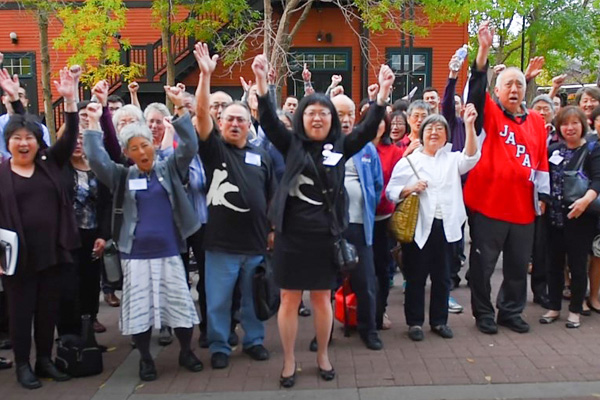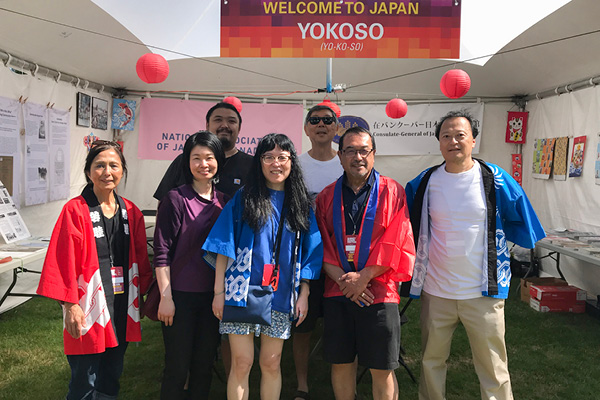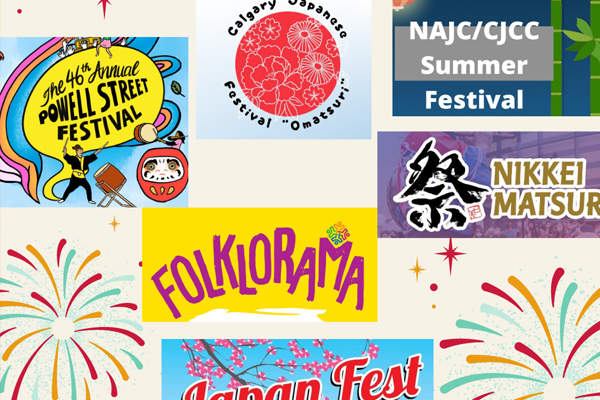Treasures from our History
In an effort to identify, preserve and document Japanese and Nikkei antiques, folk art of value to Japanese Canadians, the Heritage Committee of the NAJC and the Manitoba Japanese Cultural Centre will conduct a public art evaluation on Saturday, March 19th in Winnipeg. If time permits, a survey of the MJCCC collection will be conducted as well. This pilot project will identify and determine the value of artifacts; some which may have been family heirlooms for generations. If the one-day event is successful, we hope to offer this evaluation to other Nikkei communities. It is fitting that we are holding the pilot project in Winnipeg since it will honour the memory of Mr. Yoshimaru Abe, artist, actor, gardener, community and political activist and collector of Japanese antiques. Mr. Abe was a vital member of the Winnipeg community and the Manitoba Japanese Canadian Cultural Centre until his passing on March 9, 2006. Years earlier, as a beginning collector, Mr. Abe graciously welcomed me into his home and allowed me to examine his large Japanese sword collection, woodblock prints (ukiyo-e) and other antiques. Equally important were the stories that he told me of how these pieces “found him.” He inspired collectors to go beyond the artifacts and to do the necessary research so that one can truly be the custodian of Japanese and Japanese Canadian history. Mr. Abe was a modern day Renaissance Man. (I highly recommend you read the 2007 biographical book on Mr. Abe, Shaku of Wondrous Grace, co-authored by Art Miki, Henry Kojima and Sylvia Jansen. Copies are available from the NAJC Winnipeg office. )
Inspired by Mr. Abe and other collectors, I have had the opportunity over the years to organize evaluation workshops—similar to the famous TV show from England. One of the earliest evaluations was on Japanese swords led by Mr. Kotoken Kajihara, a well-known sword polisher (togishi) from Fukuoka, Japan. Over the course of two days, Kajihara sensei assessed (kantei) over fifty swords brought in by private collectors in Toronto. Later, he examined the eighty four blades in the collection of the Royal Ontario Museum.
Although we did not see blades that could be classified as “National Treasurers,” there were many good quality blades from the feudal period. Of equal historical importance was the family story associated with the blade which enhanced it’s value. A Nikkei veteran brought in a wakizashi blade (smaller of the two blades worn by the samurai) in World War II Japanese army mounts with a signature of the famous smith, Nosada. This family sword was given to him by a Japanese officer while he was in the Pacific theatre serving as an interpreter. In another incident, an elderly Nisei mother brought an outstanding family blade that was in high quality mounts (daimyo quality). She noted that the blade had been brought to Canada by her family prior to the war but now she wanted to sell it so that it could go back to Japan. Having two sons, she was afraid that they would not appreciate the historical value of the blade and was concerned that they would fight over it once she passed away. Mr. Kajihara later reported that the sword had been sold to a collector in Japan who already had a blade made by the same smith. One wishes that it had remained in the family given its history.
A photograph taken in 1930 at Powell Street shows two men mounted on horses wearing complete suits of armour (tosei gusoku) with long swords. There are stories of Japanese Canadians who threw their family blades into the Fraser River rather than having them confiscated by the authorities before they were sent off to the internment camps. During the 1907 Vancouver anti-Asian riot organized by white workers, Manjiro Kato joined others and forced back the rioters from the Powell Street area, brandishing a Japanese sword. I often wonder what became of that nihonto?
Japanese antiques were brought to Canada by Christian missionaries, Western visitors and Nikkei pioneers. The beloved Grace Tucker visited Japan in the 1930s and returned home with typical Japanese works of art available at that time: a child’s parasol, a kimono, geta (clogs), hashi, metal bento box, dolls, serviettes and coasters from a Kyoto restaurant. Although all of the pieces are typical tourist souvenirs, they do have historical and sentimental value due to the owner’s legacy. Grace was educated at the Anglican Women’s Training College in Toronto and sent to Vancouver in support of the Japanese Canadian community. During the period of 1942 to 1946, she was assigned by the Church to work as a welfare worker at the Slocan Internment Centre. It is commonly believed that her strong support of the rights of the Nikkei community brought her into conflict with the Anglican Church. Grace continued to serve the resettled Japanese Canadians who relocated to Toronto. Ms. Tucker’s catalogued collection is now housed at the Japanese Canadian Cultural Centre.
Works of art also cover what is known as “folk art”—art created by amateur artists. Examples of folk art could be Buddhist alters made from scrap wood or downhill skis made by young Nisei in New Denver. A Nikkei in Tashme internment camp made a sword from scrap metal and this blade was in the 1977 Centennial sword exhibition held at the Ontario Science Centre in Toronto. The historic value of folk art to our community is priceless and must be preserved.
I urge Nikkei families to have their family ‘treasures’ authenticated and to digitally record the family history surrounding the artifacts. It is my hope that portions of the Winnipeg evaluation will be recorded and posted on the NAJC national website. For those of you in the Winnipeg area who would like to register to have their antiques evaluated on March 19th, please contact: Kelly Koga at mjccc@mts.net, (Tel: 204-774-5909). There will be a nominal evaluation charge per item.
Lastly, I would like to congratulate Stan and Masako Fukawa , recipients of the 2010 Canada-Japan Literary Prize in English for The Spirit of the Nikkei Fleet. A special reception in their honour is being held at the Japanese Ambassador’s residence on February 3rd and the NAJC will be represented by Hitomi Suzuta, President of the Ottawa Japanese Community Association. Stan and Masako are long time educators and community activists and are well deserving of this honour.




